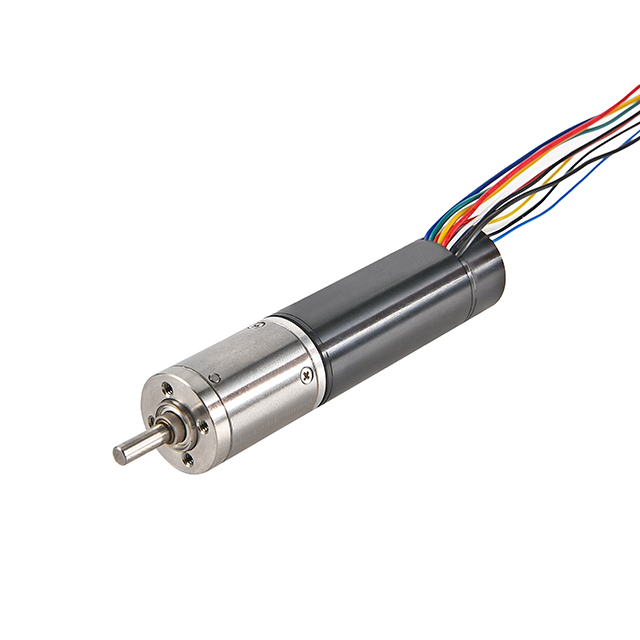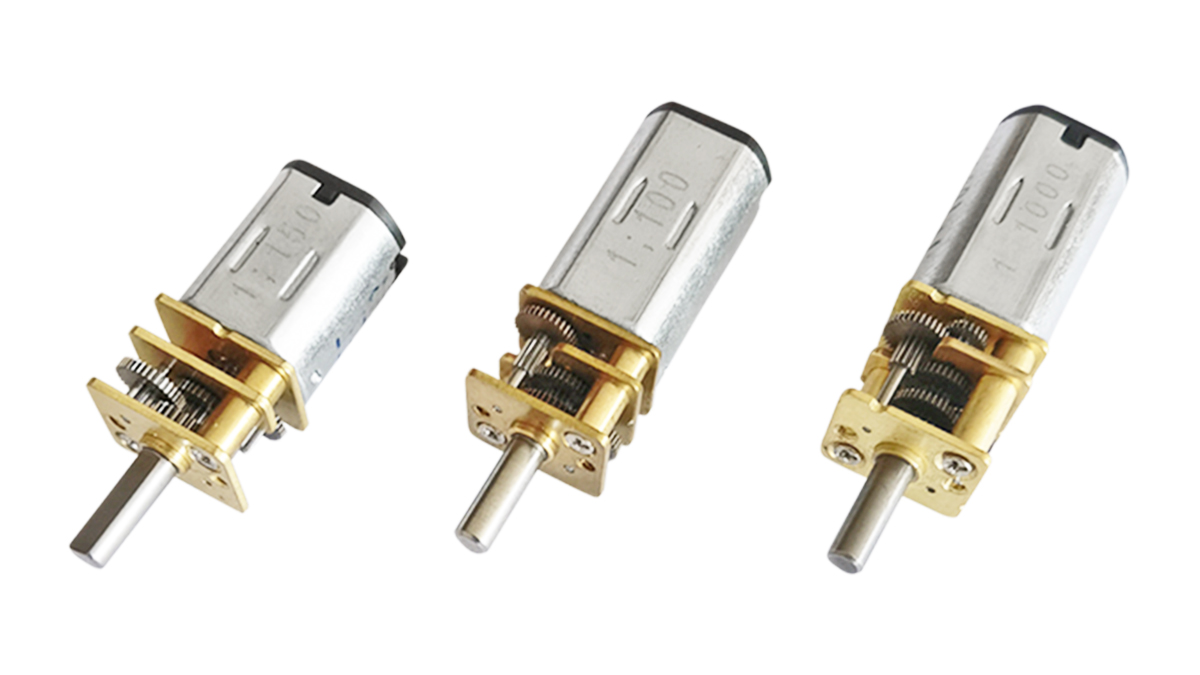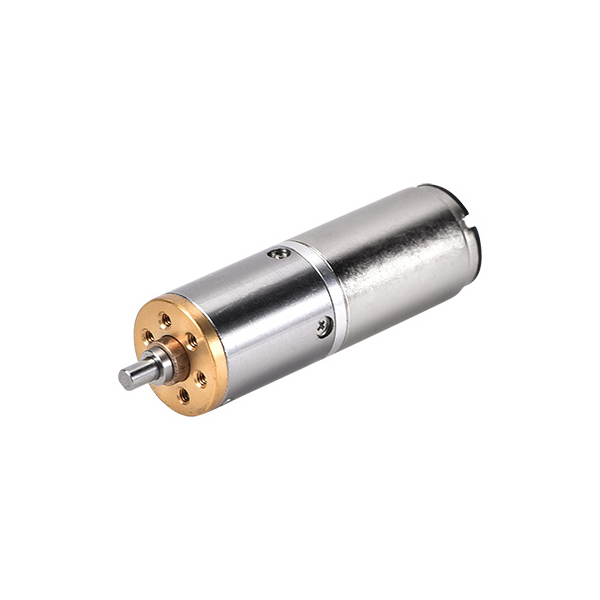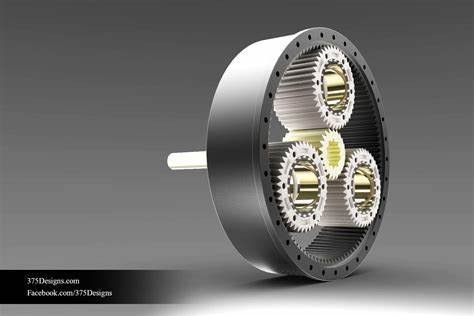A gear motor is a motor equipped with a gearbox that plays a crucial role in controlling speed and power to meet specific tasks. Understanding gear motor fundamentals is essential, as these devices enhance the efficiency of machines and are utilized across various industries. They are responsible for powering applications such as wind turbines and factory machinery.
The gear motor market is experiencing rapid growth globally. In 2021, it was valued at $6.65 billion, and projections indicate it could reach $8.91 billion by 2029, reflecting a yearly growth rate of 3.4%. The Asia Pacific region is witnessing the most significant expansion due to the increase in manufacturing facilities. Advancements in technology are further enhancing the utility of gear motors. For instance, in the realm of green energy, they improve the performance of wind turbines by effectively managing variable speeds and loads.
Key Takeaways
Gear motors mix electric motors and gears to manage speed and power. They are important for many uses.
Knowing the parts—motor, gears, and casing—helps pick the right one.
Gear motors like spur, planetary, worm, and brushless have special benefits. They are used in things like robots and gadgets.
Brushless gear motors save energy and work well in tough jobs.
To choose the best gear motor, know the speed and power needed. This helps it work better and last longer.
Gear Motor Basics: Learning About the Main Parts
Electric Motor: The Energy Provider
The electric motor is the main part of a gear motor. It changes electrical energy into mechanical energy to power the system. A good electric motor makes the gear motor work better. Studies show that well-made motors run smoothly and are very important in factories and automated systems. When combined with a gearbox, they become more efficient and save money.
Electric motors in gear motors can do many jobs. They are used in machines and even in gadgets we use daily. When joined with gearboxes, they control speed and force precisely. This makes them a dependable energy source for many uses.
Gear System: Adjusting Speed and Force
The gear system is what makes gear motors special. It changes the motor’s speed and force to fit specific needs. This system has gears that work together in a chain. By slowing down the motor’s speed, the gears increase force without losing efficiency. This balance is key for small spaces needing strong power.
Here’s a simple look at the main parts of a gear system:
Part | What It Does |
|---|---|
Output Shaft | Sends out the motor’s power. |
Ring Gear | Surrounds other gears and spreads power. |
Sun Gear | The middle gear that other gears spin around. |
Planetary Gear | Shares power by spinning around the sun gear. |
Bracket | Holds gears in place and keeps them aligned. |
Bushing | Lowers friction between moving parts. |
Gearbox Plate | Keeps the motor parts strong and steady. |
Pinion | Helps transfer spinning motion with the gears. |
This system helps gear motors handle tough jobs well. That’s why they are so useful in fields like robotics and healthcare.
Housing and Extra Mechanical Parts
The housing and other parts keep the gear motor safe. They protect the inside parts and make sure everything works smoothly. The housing keeps out dust and water and stops damage. It also lowers noise and shaking, helping the motor work better.
Note: Studies show housing is very important for motor safety. Strong designs are needed in areas with high stress to avoid damage.
Other parts like bearings and seals reduce friction and help the motor last longer. These parts work together to make sure gear motors stay reliable, even in hard conditions.
The Working Principle of a Gear Motor
Knowing how a gear motor works helps you see how it changes energy and delivers power effectively. Let’s break it into simple steps.
Changing Electrical Energy to Mechanical Energy
The first step is turning electrical energy into mechanical energy. This happens in the electric motor, where electricity flows through the stator windings. The current and magnetic field interact, creating a force that spins the rotor. This spinning produces mechanical energy.
But this process isn’t perfect. Some energy is lost due to:
Stator resistance loss: Happens because of resistance in the stator winding. It’s calculated using I²R (current squared times resistance).
Rotor resistance loss: Similar to stator loss, it occurs in the rotor bars and also uses I²R.
Core losses: Includes hysteresis losses from magnetic field changes and eddy current losses caused by currents between laminations.
Even with these losses, modern gear motors are built to reduce waste and work efficiently in many applications.
Gears Adjust Speed and Increase Force
After the motor creates mechanical energy, the gears take over. Gears adjust speed and increase torque (force) to fit specific tasks. Slowing the motor’s speed boosts torque, helping the motor handle heavy loads or tough jobs.
For example, advanced designs use methods like Tooth Contact Analysis (TCA) to improve gear performance. These techniques make gears more reliable and reduce vibration by nearly 47.89%. This improves stability and torque delivery.
Here’s how the gear system works:
The motor’s output shaft moves the sun gear, which powers the planetary gears.
The planetary gears spin inside the ring gear, sharing the load and increasing torque.
The final output shaft sends the adjusted speed and torque to the machine.
This process makes gear motors perfect for precise and powerful tasks, like in robots or medical devices.
Sending Power and Staying Efficient
The last step is transferring the adjusted energy to the machine. The gear motor’s design affects how well this energy transfer works.
Experts study gear motor performance to improve efficiency. They use lever methods to measure ratios, speeds, and torque. Optimization algorithms help find the best designs. Simulations and 3D models test these ideas to ensure the motor works at its best.
Aspect | What It Means |
|---|---|
Performance Analysis | Focuses on making transmissions more efficient. |
Methodology | Uses lever methods to measure speed, torque, and ratios. |
Optimization | Uses algorithms to find the best designs for better performance. |
Validation | Tests ideas with simulations to confirm efficiency and reliability. |
Efficient power transfer helps gear motors work reliably while saving energy. This makes them useful in industries like electronics and factory automation.
By learning these steps, you can understand why gear motors are so versatile and effective in real-world uses.
Types of Gear Motors and Their Advantages
Gear motors come in different types for various tasks. Knowing their features helps you pick the right one. Let’s look at three common types: spur gear motors, planetary gear motors, and worm gear motors.
Spur Gear Motors: Easy and Dependable

Spur gear motors are simple and affordable. They use straight-toothed gears to move power between shafts. This basic design makes them useful for many jobs.
These motors work well at low speeds. They give steady power, making them great for tasks needing constant speed and force. You’ll find them in machines, robots, and gadgets.
Did You Know? Spur gear motors are very reliable in factories. Engineers test their strength and conditions to ensure they last long. This makes them a trusted choice for tough jobs.
But they can be noisy, especially when running fast. They also lose efficiency with high-speed ratios. Still, their low cost and reliability make them a smart option.
Gear Motor Type | Pros | Cons |
|---|---|---|
Spur Gear Motor | Simple, affordable; Works well at low speeds | Noisy; Less efficient at high speeds |
Planetary Gear Motors: Precise and Powerful

Planetary gear motors are small but strong. They use gears that move like planets around the sun. This design lets them handle heavy loads while staying compact.
These motors are perfect for jobs needing accuracy and power. They’re used in robots, medical tools, and factory systems. Their design spreads force evenly, making them last longer.
Planetary motors are great for heavy-duty tasks.
Their small size reduces system weight, ideal for automation.
Studies show they transfer more force than spur motors.
Study Title | Key Findings | Methodology |
|---|---|---|
Reliability Evaluation of Transmission Planetary Gears | Reliability tested with life models. | Used Weibull statistical methods. |
Assessment of Probability of Gear Tooth Side Wear | Gear wear studied through experiments. | Combined tests with data analysis. |
While they are pricier and more complex, their benefits outweigh the cost. For precision and strength, they are worth it.
Worm Gear Motors: Quiet and Safe

Worm gear motors use a screw-like gear to turn a wheel. This design allows them to reduce speed a lot in one step. They are compact and efficient for specific uses.
These motors are very quiet. Special materials and designs keep noise low, meeting strict sound standards. This makes them great for hospitals and homes.
Tip: Worm gear motors don’t backdrive under load. This means they stay locked without extra brakes, making them safer.
Gear Motor Type | Pros | Cons |
|---|---|---|
Worm Gear Motor | Quiet; Self-locking; High speed reduction | Less efficient; One-way only |
However, they are less efficient than other motors. They also wear out faster if not cared for. Even so, their quietness and safety make them ideal for locks and security systems.
By learning about these motors, you can choose the best one. Whether you need simplicity, precision, or quietness, there’s a motor for your job.
Brushless Gear Motors: Efficient and Long-Lasting

Brushless gear motors are a modern choice for tough jobs. They don’t use brushes like older motors, which makes them last longer and work better. If you need a motor that’s reliable and efficient, brushless gear motors are a great option.
One big advantage is their high efficiency. Without brushes, there’s less friction and heat. This helps them work at 85-90% efficiency. Older brushed motors only reach 75-80% efficiency. This means brushless motors save energy while doing the same or better work. For tasks like robotics or medical tools, this energy saving is very important.
Motor Type | Efficiency (%) |
|---|---|
Brushed DC Motors | 75 – 80 |
Brushless DC Motors | 85 – 90 |
Brushless motors also last much longer. Since they don’t have brushes, there’s no wear from sliding parts. They can run up to 25,000 hours, which is about five times longer than brushed motors. This long life means less fixing and fewer breaks in work.
Motor Type | Service Life (Hours) |
|---|---|
Brushed DC Motors | 1,000 – 3,000 |
Brushless DC Motors | 20,000 – 25,000 |
Another great thing is their steady performance. Without brushes, they don’t lose power over time. This makes them perfect for jobs needing precision, like factory machines or medical devices.
Brushless motors are also very flexible. You can pair them with different gear systems, like planetary or spur gears. This lets you control speed and force for specific tasks. They’re useful for many things, from electric tools to advanced robots.
How Gear Motors Work in Real-World Applications
Gear motors are important for many real-world uses. They help machines in factories and devices in healthcare work better. Let’s see how gear motors are used in different areas.
Industrial Machinery and Automation
In factories, gear motors help run machines and automate tasks. They control speed and power for things like conveyor belts and packaging. Even in tough conditions, gear motors keep working well.
Factories often need custom gear motors. These can have special shafts, mounts, or power levels to fit specific jobs. Tests like torque checks and heat tests make sure they work reliably. Gear motors are also used in farming machines and medical robots.
Performance Metric | What It Means |
|---|---|
Special designs for shafts, mounts, and power needs. | |
Quality Testing | Checks for strength and heat performance. |
Success Stories | Used in farming and medical robots successfully. |
These features make gear motors very useful in factory automation.
Robotics and Smart Devices
Robots and smart gadgets need gear motors for smooth movement. In robots, gear motors power arms, wheels, and grippers. For example, recycling robots use gear motors to grab and sort waste. Sensors and smart systems help them work better in tricky situations.
Smart devices also use gear motors. They combine sensors, motors, and controllers to work smoothly. For example:
Sensors, like cameras, gather information.
Motors move parts, like wheels or arms.
Controllers make sure everything works together.
Motor Type | Torque | Speed | Efficiency | Features |
|---|---|---|---|---|
140 Nm | Up to 13 rad/s | Up to 86% | Built-in electronics, water-resistant | |
Joint Module | 50 Nm | Up to 28 rad/s | N/A | Compact, customizable |
Precision Joint Module | 12 Nm – 484 Nm | 0.9 – 17.8 rad/s | N/A | Built-in sensors, customizable |
Frameless Motor | N/A | Up to 15,000 rpm | N/A | Lightweight, hollow shaft options |
These features make gear motors key for robots and smart devices.
Healthcare Equipment and Medical Devices
In healthcare, gear motors make medical tools work better. They are used in devices like insulin pumps and surgical tools. For example, a small gear motor helps portable dental cleaners work quietly and smoothly.
Gear motors also power robotic surgery tools. These tools need to be small and precise for delicate surgeries. Gear motors help improve patient care and make healthcare tools more effective.
By learning how gear motors are used, you can see why they are so important in many industries.
Consumer Electronics and Everyday Tools
Gear motors are important in many gadgets you use daily. They help devices work better by giving precise control and saving space. Their small size and efficient power make them key in modern technology.
You’ll find gear motors in many devices, like:
Smartphones, where they help cameras rotate or screens fold.
Smart mice, which use them for smooth cursor movements.
Electric pan-tilt cameras, which need quiet and steady operation.
These examples show how gear motors improve how devices work. They provide strong power in small spaces, making them perfect for compact gadgets. They also lower noise and shaking, giving a quieter and smoother experience.
Gear motors offer many benefits in electronics:
More power for tough tasks.
Better speed control for delicate jobs.
Quieter operation for user comfort.
Smaller size compared to separate motor systems.
Easier to install and maintain.
Save energy with efficient power use.
Everyday tools, like electric screwdrivers, also use gear motors. These motors give the strength needed to turn screws easily. This makes chores faster and simpler. Their small size helps create lightweight tools that are easy to carry.
By adding gear motors to gadgets and tools, makers improve how they work and last. Next time you use a smart device or tool, think about the gear motor inside making your life easier.
Gear motors use electric motors and gear systems to control speed and force accurately. Their main parts include the motor, gears, and housing, which work together to change energy into useful power. Different types of gear motors—spur, planetary, worm, and brushless—are designed for specific jobs and offer unique benefits.
Tip: Knowing these basics helps you pick the best gear motor for your task. Whether it’s for robots, medical tools, or daily gadgets, choosing the right one improves performance and makes it last longer.
FAQ
What does a gear motor do?
A gear motor mixes a motor with a gearbox. It adjusts speed and force to help machines work better. This makes tasks easier by matching power to the job’s needs.
Tip: Use gear motors for exact control of speed or force.
How can you pick the best gear motor?
Know your task’s speed and force needs.
Choose the motor type (spur, planetary, worm, or brushless).
Check if the size and power fit your machine.
Look for strong and efficient designs.
Note: Custom options, like those from INEED Motors, can fit special needs.
Why are planetary gear motors good for tight spaces?
Planetary gear motors share force across several gears. This lets them handle heavy work while staying small. They are great for places with little room.
Do gear motors save energy?
Yes, gear motors use energy wisely by lowering speed and boosting force. Brushless gear motors work at 85-90% efficiency, saving energy and staying reliable.
Where are gear motors used most?
Gear motors are used in robotics, healthcare, and gadgets. They power things like smart locks, insulin pumps, and electric tools. These motors make devices run smoothly and accurately.
Did You Know? Gear motors are also key in factory machines and farm tools.






